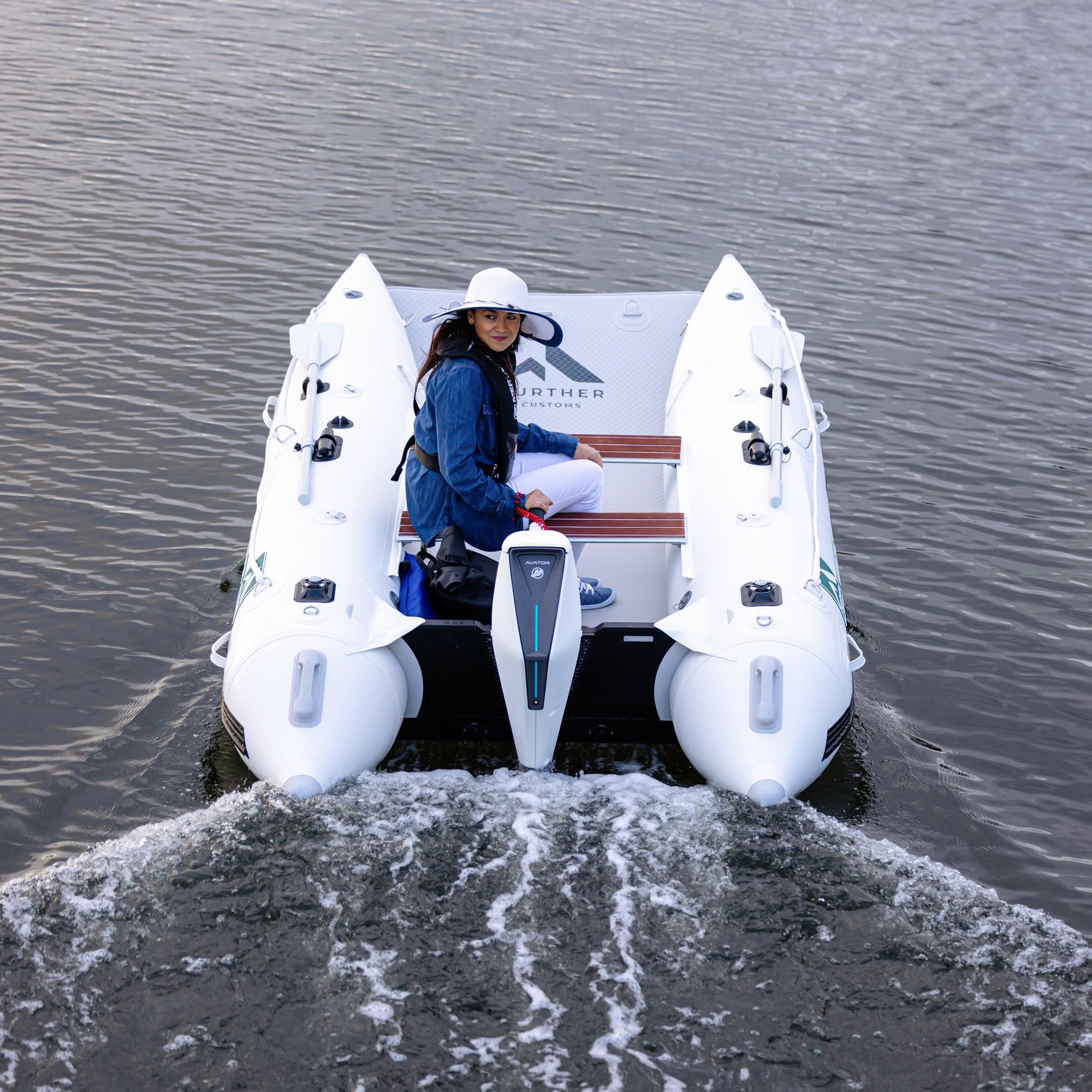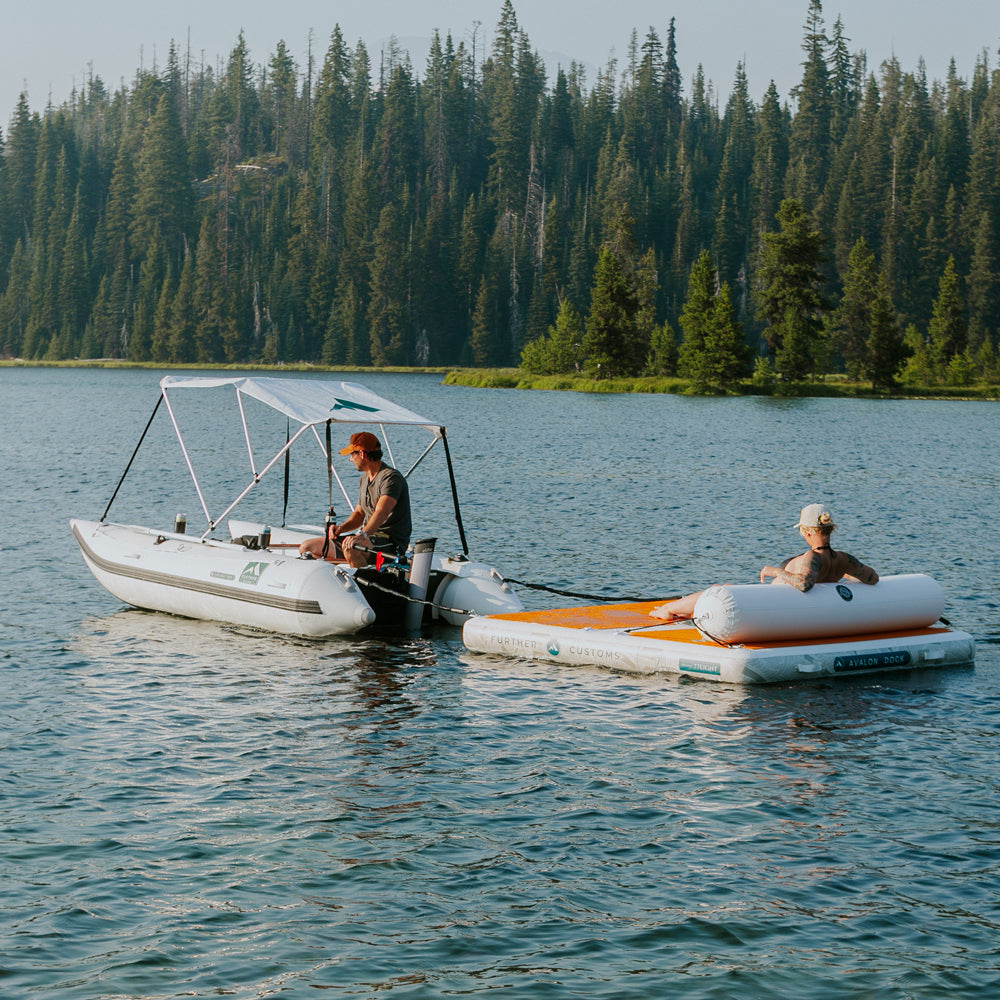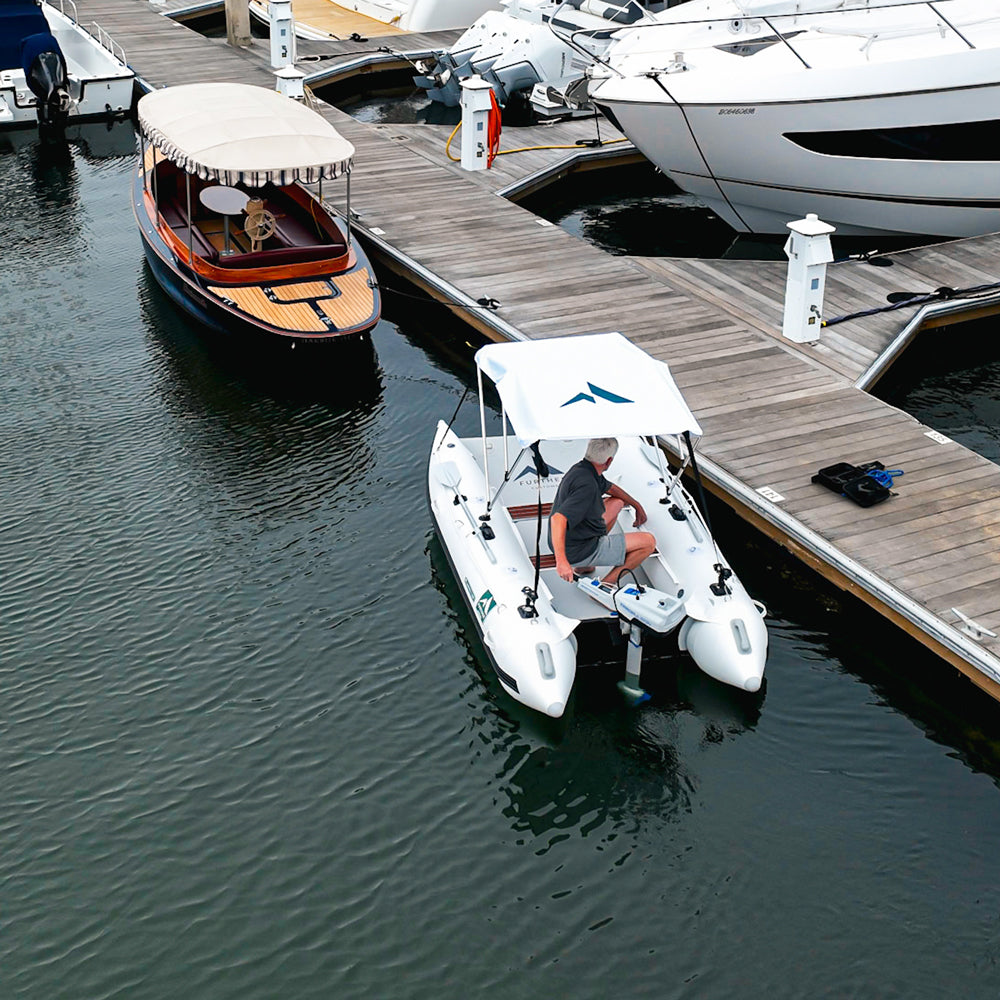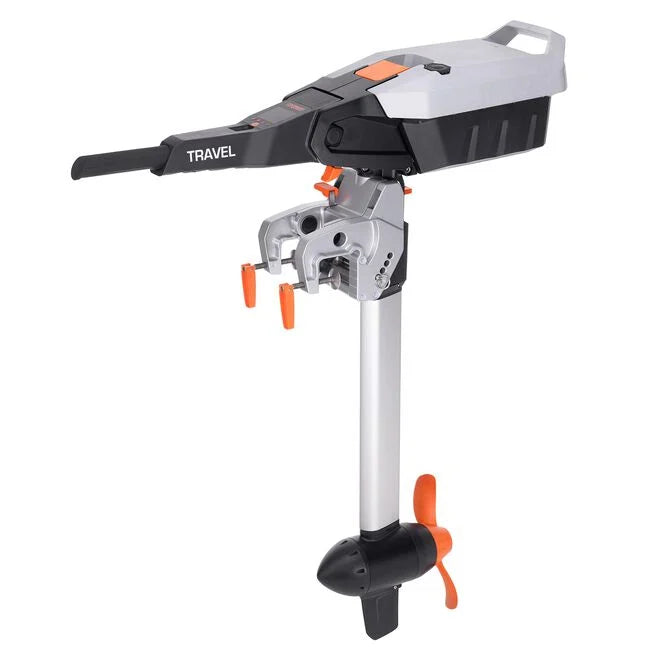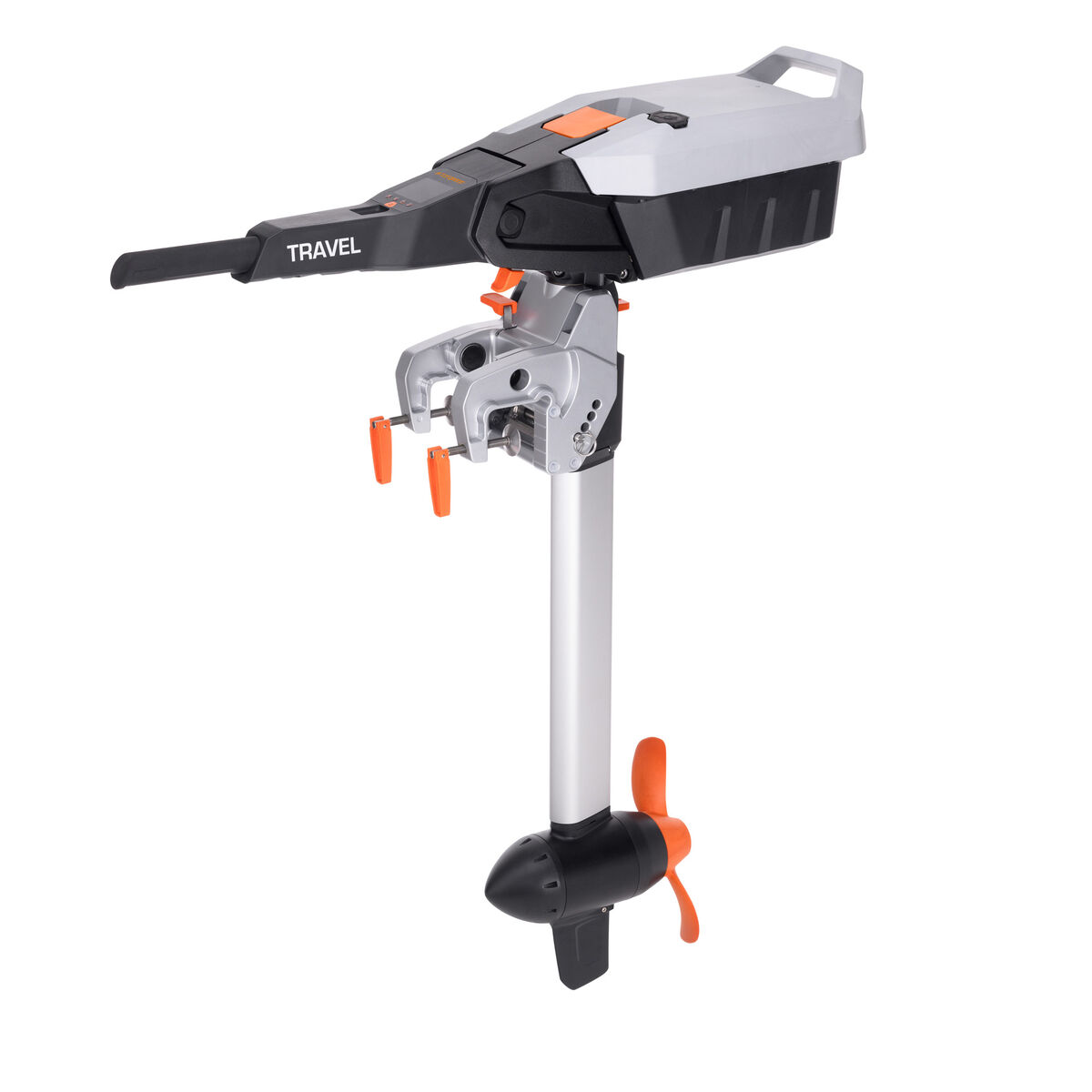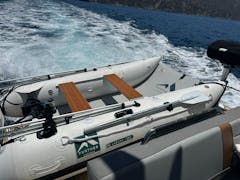Filters
5 products

Perfect for Ferrying & Short Adventures
ePropulsion eLite
Perfect for short trips in calm waters, the eLite excels on dinghies, inflatable boats, and yacht tenders used around marinas, docks, gentle rivers and freshwater lakes. This 500W electric outboard engine includes a 378Wh integrated battery, 360° steering, quick-release bracket, and 100W solar charging. Ideal for harbor ferrying, it’s ultra-light, simple to use, and easy to store—perfect for boaters who value portability.

Best All-Around Electric Outboard for Inflatable Boats and Coastal Cruising
ePropulsion Spirit 1.0 Plus
Ideal for eco-conscious boaters using inflatable boats, dinghies, or tenders on lakes, harbors, and coastal waters, the 2025 Travel S delivers 1,100W of quiet, efficient power. Features include 360° steering, a no-cable click-in battery, app integration, and 200W solar support. It’s one of the smartest and most flexible electric outboard motors available, built for performance and modern convenience.
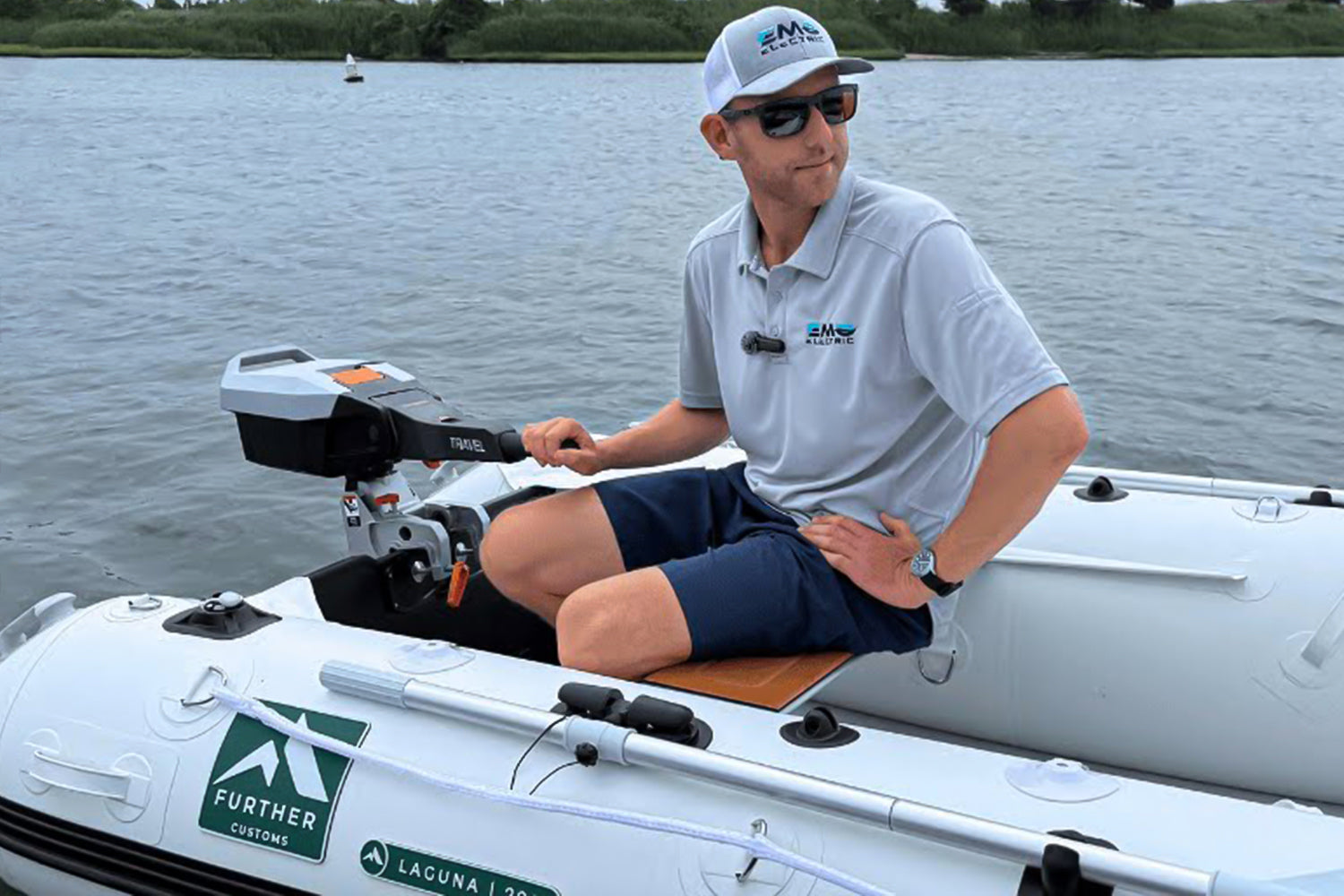
Feature-Rich Electric Outboard Engine for Modern Boaters
Torqeedo Travel 1103
Ideal for inflatable boats, dinghies, and tenders used on freshwater lakes, marinas, and nearshore routes, the 2025 Torqeedo Travel S delivers 1,100W of clean, quiet propulsion. It comes standard with a 1,080Wh click-in lithium battery—no cables required—and supports solar charging up to 200W. With 360° steering, smart app connectivity, and intuitive controls, it’s one of the most advanced electric outboard motors available for boaters seeking modern performance, versatility, and off-grid capability.
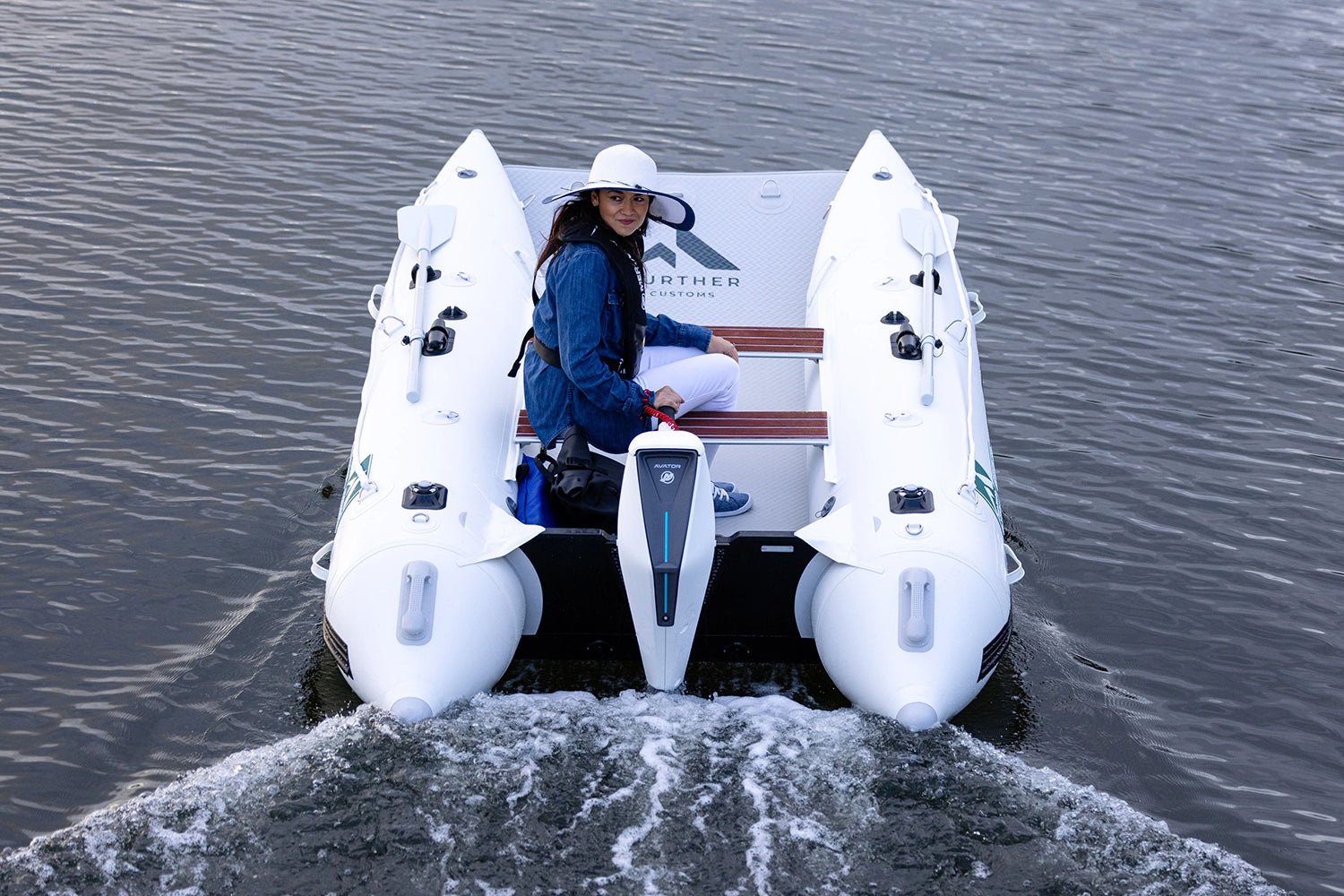
Most Serviceable Electric Outboard with Trusted Dealer Support Worldwide
Mercury Avator 7.5e
Best for yacht tenders, inflatables, and dinghies where dependable service is a must, the Mercury Avator 7.5e offers 750W of power and a swappable 1,005Wh battery. With a quick-release transom bracket, digital throttle, and full-color display, it’s perfect for marina and harbor transport. Backed by Mercury’s massive global dealer network, it’s the most supported electric outboard on the market.
Compare Electric Outboard Engines
All four of these electric outboard motors are well-suited for powering small inflatable boats, but each offers unique advantages. The ultra-light ePropulsion eLite is ideal for quick marina transfers, small lakes and easy storage. The Spirit 1.0 provides extended range and power for longer trips. The Mercury Avator 7.5e delivers a refined user experience with a quick-release mount and the backing of Mercury’s global support network. Compare below to find the best electric motor for your vessel.
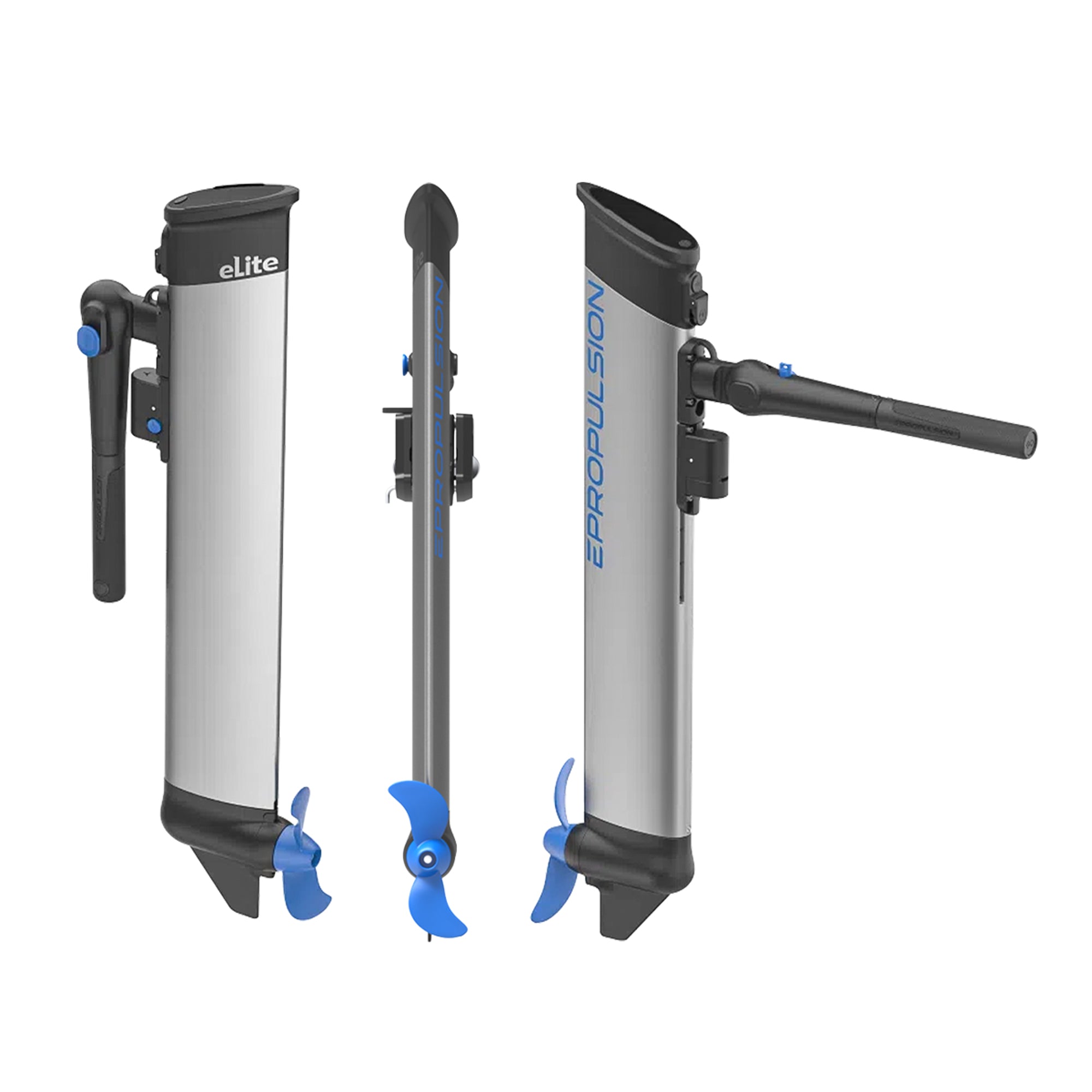
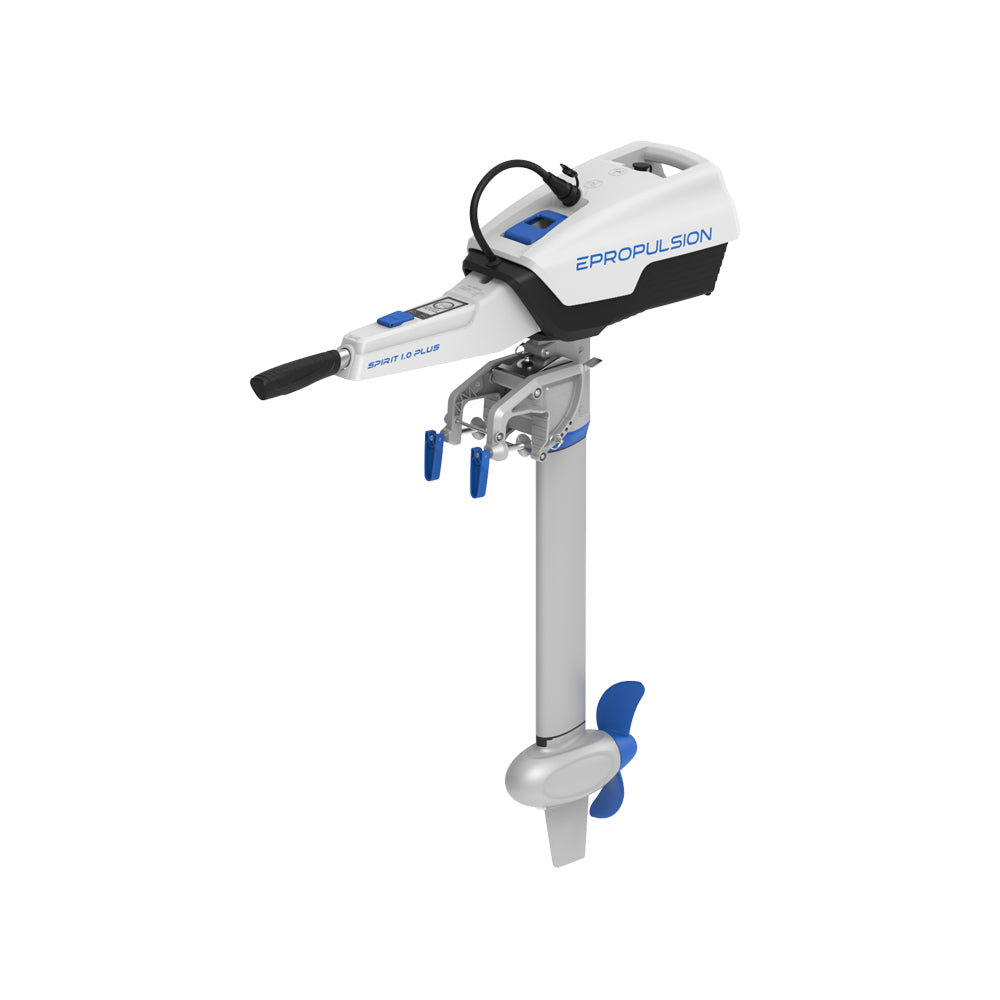
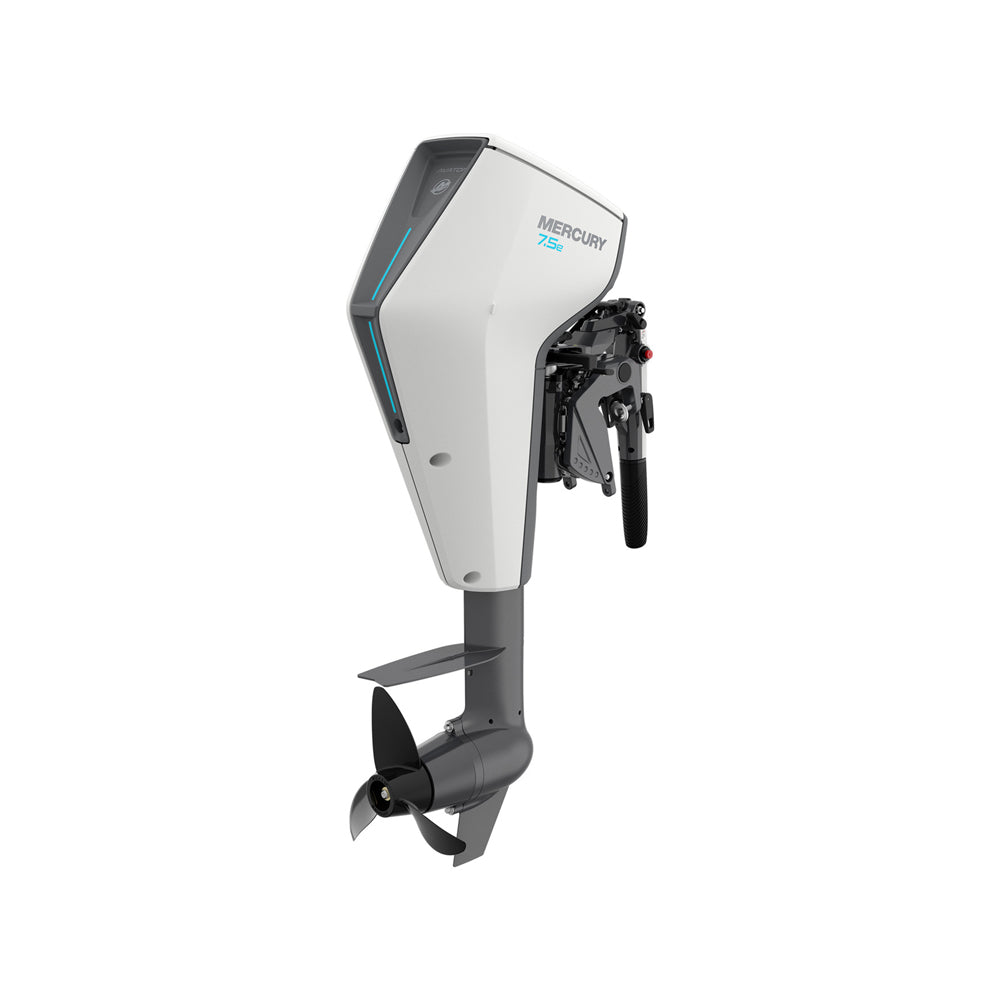



Short Marina Runs, Ferrying, Calm Rivers & Small Lake Cruises
Longer Marina Runs, Calm Coastal Passages & Bay Cruising through Light Chop
Yacht-to-Shore Tendering, Gasoline Restricted Waters, Marina Runs & Leisure Cruising
500W
1,000W
750W
378Wh (Built In)
1,276Wh (Removable)
1,005Wh (Removable)
14.7 lbs (Engine) 17.4 lbs (Engine + Transom Brack)
42.6 lbs Total - 23.4 lbs (Engine Only) 19.2 lbs (Battery Only)
60 lbs Total - 43 lbs (Engine Only) 17 lbs (Battery Only
360 Rotation & Quick-Release Transom
Standard Tiller
Digital Throttle & Quick Release Transom
Up to 100W
180W
NA
Power Output, Battery Level, Battery Health (Monochrome LCD)
Power Output, Battery Level, Battery Health + Estimating Time or Range Remaining (Monochrome LCD)
Power Output, Battery Level, Battery Health + Estimating Time or Range Remaining + Speed (Full Color Digital Display)
Lightest All-In-One Electric Outboard with Built-In Battery & Quick-Release Transom Bracket
Longest Range with Standard Battery, Solar Charging Capability & Floating Battery
Quick Release Transom Bracket, Premium Aesthetic and Polished Display, & Mercury’s Global Dealer & Service Network
Why Choose an Electric Outboard for Your Dinghy, Tender, or Inflatable Boat?
Modern electric outboard motors are transforming the way boaters approach short-range travel, shore access, and on-water exploration. Whether you’re powering an inflatable boat, a rigid dinghy, or a yacht tender, an electric motor offers clear advantages over traditional gas outboards—especially for those boating from moorings, anchorages, or destinations like Catalina Island.
Clean, Hassle-Free Boating with Zero Fuel Smells
Leave the fumes and fuel spills behind. Electric motors keep your deck clean, your hands odor-free, and your boat locker safe from messy gas cans or leaks—great for tenders and family boats.
Instant, Reliable Starts at the Push of a Button
Forget priming, choking, and pulling on a stubborn start rope. Electric outboards start instantly with the push of a button. Even if your motor is stored on its side or moved between uses, it won’t flood or require complicated restarts.
Smooth, Silent Operation for a More Peaceful Experience
Electric outboards run nearly silent, with no vibration through the tiller. This makes them ideal for early-morning harbor transfers, wildlife observation, or a peaceful cruise from your anchored yacht, power or sailboat to shore. It’s the perfect motor for ferrying between moorings and marina docks without disturbing others—or yourself.
Clean, Hassle-Free Boating with Zero Fuel Smells
Leave the fumes and fuel spills behind. Electric motors keep your deck clean, your hands odor-free, and your boat locker safe from messy gas cans or leaks—great for tenders and family boats.
Minimal Maintenance with More Time on the Water
Unlike gas-powered engines, electric boat motors require no fuel mixing, no carburetor cleaning, and no flushing after use in saltwater. There's no risk of spilling fuel on your deck, breathing in exhaust fumes, or dealing with stale gas after winter storage. With lithium-ion batteries, your motor is always ready—just charge and go.
Lightweight Design for Easy Handling and Transport
Most electric outboards are significantly lighter than their gas counterparts, especially models designed for small tenders, folding dinghies, and inflatable boats. You can transport them by hand, store them in tight lockers, or easily loading into a car, van or RV.
Recharge Anywhere—Even Off the Grid
Many electric outboards support solar panel charging, allowing you to stay powered while anchored for days. Whether you're moored off a remote beach, anchored at Catalina Island, or camping on a lake, you can top off your battery with clean energy—no need to visit a fuel dock.
Smart Long-Term Investment in Convenience and Efficiency
With no oil changes, spark plugs, or impellers to replace, electric outboards save you hundreds in service costs over time. They're also more energy-efficient and eliminate the need to haul fuel cans to the dock. Over time, the simplicity, durability, and reduced upkeep make them a better investment—especially for seasonal or multi-boat owners.
Frequently Asked Questions
What is an electric outboard motor and how does it work?
An electric outboard motor is a propulsion system powered by a rechargeable battery instead of gasoline. It uses a brushless or direct-drive electric motor to rotate a propeller, offering quiet, clean, and efficient thrust for boats such as dinghies, tenders, inflatables, kayaks, and small sailboats. Most modern models feature integrated or swappable lithium-ion batteries, intuitive tiller or remote control, and simple plug-and-play operation.
What types of boats are electric outboards best suited for?
Electric outboards are ideal for inflatable boats, dinghies, yacht tenders, kayaks, catamarans, and other small watercraft used in harbors, lakes, and coastal areas. They're especially useful for shore transfers from anchored or moored boats, such as those visiting Catalina Island, Two Harbors or other nearshore destinations. Many boaters also use them on freshwater lakes where gas engines are restricted or discouraged.
How long does the battery last on an electric outboard?
Electric outboard engines deliver impressive efficiency at lower throttle levels, but their range decreases rapidly as speed increases—a dynamic known as exponentially diminishing returns. This is due to the way water resistance (drag) scales with speed. When you double your throttle, you’re not simply using twice the power—you may be using three to four times more energy, especially as you approach top speed.
As a result, cruising at full throttle can drastically reduce your runtime, sometimes cutting it about an hour. In contrast, operating at quarter or half throttle dramatically extends battery life, often allowing for 4–6 hours of continuous use or over 15 miles of range on a single charge. For boaters using dinghies, tenders, or inflatable boats to ferry to shore or travel between moorings, maintaining a moderate cruising speed offers a smart balance of efficiency, performance, and range—especially when you're off-grid or relying on solar recharging.
Key takeaway: To maximize the performance of your electric outboard, aim to operate at 50% throttle or less whenever possible. This sweet spot provides exceptional range and preserves battery health, making it ideal for long days on the water or when carrying a spare battery for extended outings.
How fast can an electric outboard motor go?
Speed varies by motor output and vessel type, but most electric outboards in the 500W–1,100W range reach speeds between 3 to 6 knots (3.5–7 mph). High-performance models may reach up to 8–10 knots on light planing hulls. For dinghies, tenders, and inflatables, this is more than enough for short-range commuting or harbor navigation.
Do electric outboard engines require maintenance?
Very little. Electric outboards are virtually maintenance-free. There are no oil changes, spark plugs, impellers, or fuel systems to service. Most models require only occasional rinsing, battery care, and basic inspections. This is a major advantage over gas outboards, which often need carburetor cleaning, engine flushing, and regular tune-ups.
How do you charge an electric outboard motor?
Electric outboards charge via AC wall outlets or 12V/24V DC sources, and many support solar charging. Charging time depends on battery size and charger speed. Some models support fast charging or have optional high-output chargers. Solar charging is ideal for off-grid use, especially when anchored for multiple days.
Can the electric engines get a boat on plane?
Most electric outboard engines in the 500W to 1,100W range are designed for displacement speeds, making them ideal for dinghies, tenders, and inflatable boats used for short-distance cruising, harbor transport, or ferrying to shore. These motors are not intended to bring a boat onto plane, which requires significantly more thrust and speed than electric systems in this category typically offer.
For those seeking planing performance, only higher-powered electric models—such as the ePropulsion Navy series or Torqeedo Cruise series in the 3kW to 10kW range (roughly 6–20HP equivalent)—have the capability to plane a small, lightweight hull. However, the combination of large motors, heavy battery banks, and high voltage systems often makes these setups cost-, space-, and weight-prohibitive, especially for portable or inflatable boat applications.
For this reason, if achieving planing speed is a priority, we recommend a minimum of a 6HP engine when pairing with any inflatable or RIB. In many cases, an 8HP or larger engine is more effective, especially when carrying multiple passengers or gear, or when operating in choppy or tidal conditions.
In general, we advise choosing the largest engine size a user can comfortably lift and mount on their boat’s transom. This not only ensures better speed and range but also improves overall handling and responsiveness, particularly when using the vessel as a primary tender, island hopper, or shore shuttle. For those prioritizing performance, range, and versatility—especially when getting on plane is desired—a lightweight gas engine in the 6–15HP range remains the most practical solution.
How are electric outboards easier and safer to store and transport?
Yes—and they offer major advantages over gas-powered outboards when it comes to storage, safety, and cleanliness.
Most electric outboard motors are not only lighter and more compact, but they can also be safely stored in enclosed spaces like boat lockers, cabin hatches, RVs, or even indoors—something that’s never recommended with gas engines due to flammable fuel, lingering odors, and the risk of vapor buildup. Since there’s no gasoline or oil involved, you’ll never deal with fumes leaking into your boat cabin, fuel smells soaking into your vehicle, or hazardous storage conditions on board.
Electric motors often break down into two components: the battery and the motor unit, making them even easier to lift, carry, and stow in tight compartments. This makes them particularly appealing for catamarans, cruisers, and sailboats where locker space is limited and fuel storage can create safety concerns.
And unlike gas engines that must be stored upright to avoid leaking, many electric outboards can be safely stored on their side, transported in a car, SUV, or truck, and even kept inside a home or apartment without worry. They're ideal for people who live in condos, boat out of shared marinas, or travel with their outboard between destinations.
Key benefits:
- No fuel leaks, vapors, or lingering odor
- Safe for indoor and enclosed storage (homes, lockers, hatches)
- Lightweight and modular for easy lifting and transport
- Perfect for RVs, vans, and vehicle trunks
- No upright-only storage constraints like gas motors
For boaters who value safety, cleanliness, and flexibility—especially in tight or shared spaces—electric outboards are the most convenient and user-friendly option available today.
Are electric outboards worth the investment?
Though the upfront cost can be higher than small gas motors, electric outboards save money over time by eliminating fuel costs, engine maintenance, and service downtime. They’re especially cost-effective for boaters who use their tender regularly, cruise off-grid, or want a reliable, always-ready propulsion system with minimal upkeep.


